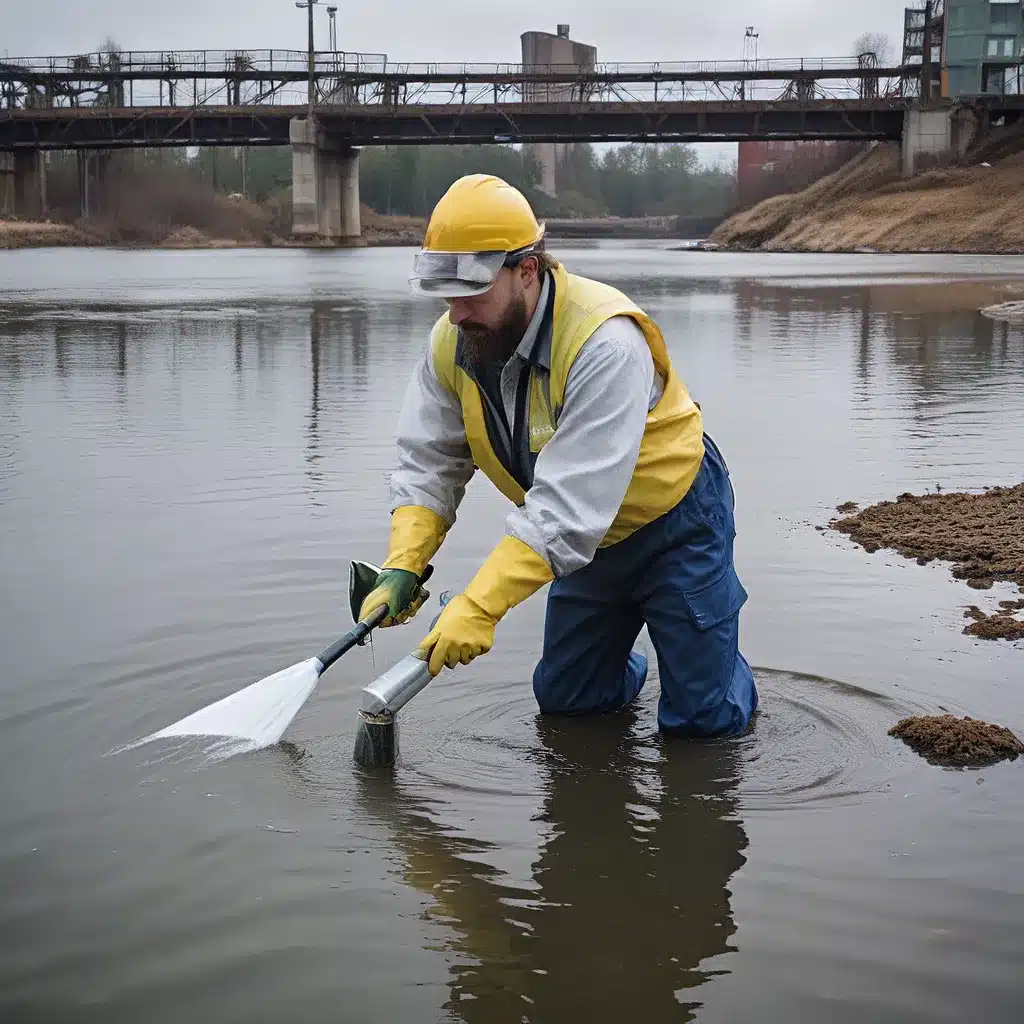
Diving into the Depths of Water Treatment
As an environmental enthusiast, I’ve always been fascinated by the hidden complexities of our most precious resource – water. Sure, we all know the basics: drink plenty of it, conserve it, and keep it clean. But have you ever wondered what really goes on behind the scenes to ensure your water is safe, healthy, and environmentally responsible?
Well, buckle up, because I’m about to take you on a deep dive (pun intended) into the world of industrial cleaning techniques for water treatment. It’s a realm filled with specialized knowledge, cutting-edge technology, and a whole lot of environmental stewardship. And trust me, it’s way more interesting than it sounds.
The Unseen Threats to Our Water Supply
Let’s start with the basics – the potential threats to our water supply. Sure, we all know about the obvious culprits like bacteria, nitrates, and heavy metals. But did you know that even the most crystal-clear, tasteless water could be hiding a whole host of invisible dangers?
According to the Indiana Department of Health, well water is particularly vulnerable to a wide range of pollutants, from industrial waste and household chemicals to naturally occurring substances like arsenic and methane. And the real kicker? Many of these contaminants are completely colorless and odorless, making them a real challenge to detect without proper testing.
Yikes, right? But don’t worry, this is where the industrial cleaning experts come in. They’ve got a whole arsenal of specialized techniques and technologies to identify, remove, and prevent these hidden threats from infiltrating our water supply. And let me tell you, it’s way more fascinating than you might think.
The Science Behind Effective Water Treatment
Alright, let’s dive a little deeper (there’s that pun again) into the science behind effective water treatment. It’s a complex and ever-evolving field, but the key is understanding the specific challenges posed by different types of contaminants.
For example, when it comes to dealing with heavy or bulky materials, proper lifting techniques and mechanical assistance are crucial to prevent injuries and ensure efficient handling. And when you’re working with volatile organic compounds (VOCs) – like those found in paints, cleaners, and fuels – ventilation, protective equipment, and careful disposal methods are essential to minimize exposure and environmental impact.
But it’s not just about the physical aspects of water treatment. The EPA has also identified the importance of understanding the potential health effects of various contaminants and taking a proactive approach to addressing them. After all, what’s the point of having clean water if it’s still making us sick?
Embracing Innovative Solutions
As an environmental enthusiast, I can’t help but get excited about the cutting-edge solutions being developed in the water treatment industry. It’s a field that’s constantly evolving, with new technologies and techniques emerging all the time.
Take, for instance, the growing trend of sustainable and eco-friendly cleaning methods. Inland Waters Inc., a leading provider of industrial cleaning and environmental services, has been at the forefront of this movement, developing innovative techniques that minimize waste, reduce energy consumption, and protect the local ecosystem.
From using bioremediating bacteria to break down organic contaminants to implementing advanced filtration systems that capture even the smallest particles, these water treatment experts are constantly pushing the boundaries of what’s possible. And the best part? They’re doing it all with a strong focus on environmental stewardship and community engagement.
The Power of Collaboration
But it’s not just the water treatment companies that are making waves in this industry. There’s also a growing emphasis on collaboration and knowledge-sharing, with organizations like the Indiana Department of Health and the EPA playing a crucial role in setting standards, providing resources, and helping private well owners navigate the complex world of water quality.
And it’s not just the experts who are getting involved. Increasingly, communities are taking an active role in the water treatment process, working with local organizations to test their water, identify potential threats, and implement sustainable solutions.
A Future of Clean, Healthy Water
As I wrap up this deep dive into the world of industrial cleaning for water treatment, I can’t help but feel a sense of optimism and excitement about the future. Sure, there are still plenty of challenges to overcome, from outdated infrastructure to the ever-evolving nature of environmental threats. But with the dedicated efforts of water treatment professionals, regulatory bodies, and engaged communities, I believe we’re well on our way to a future where clean, healthy water is a given, not a luxury.
So, the next time you turn on your tap, take a moment to appreciate the hidden heroes working tirelessly to ensure your water is safe, sustainable, and environmentally responsible. Because when it comes to our most precious resource, there’s no such thing as too much care and attention.


